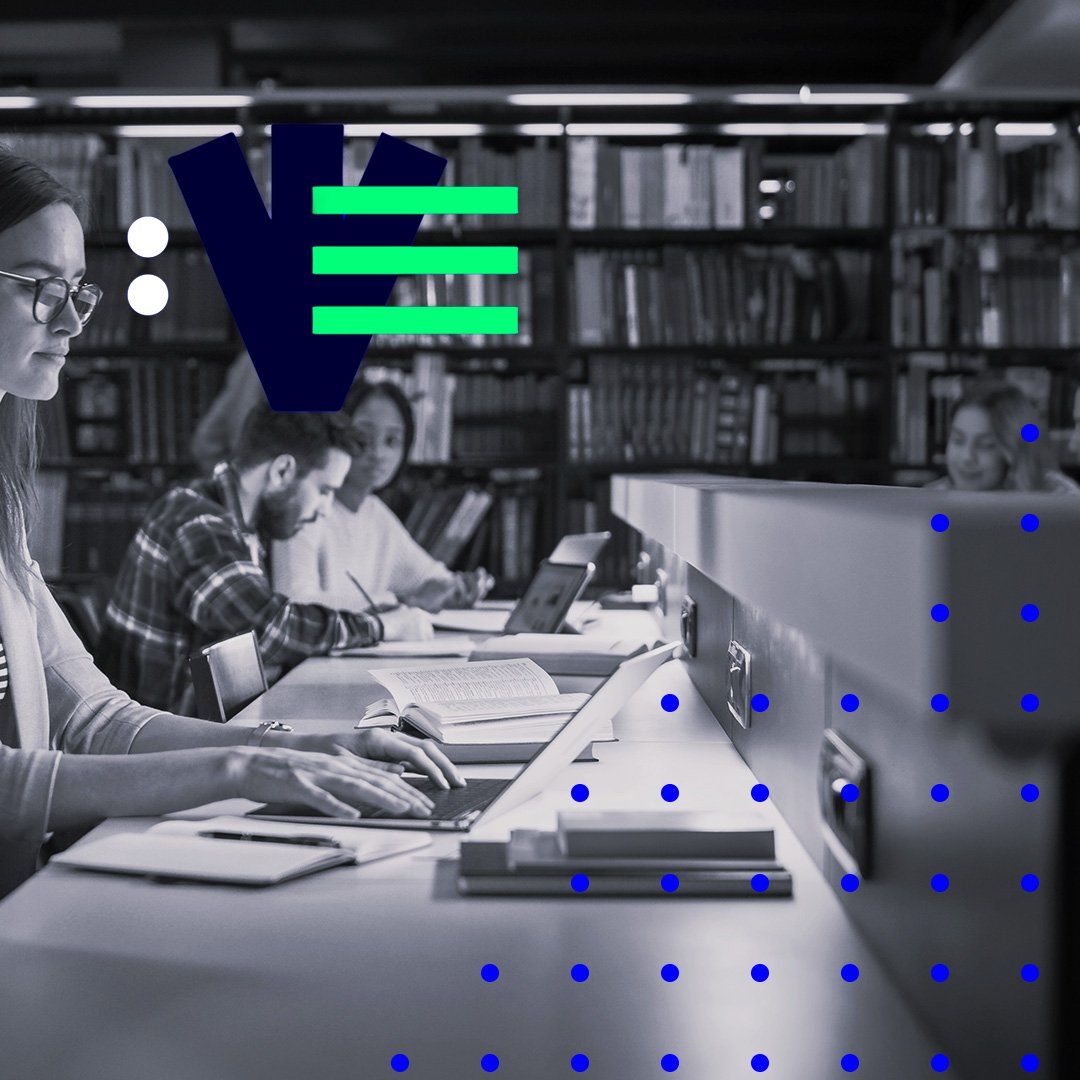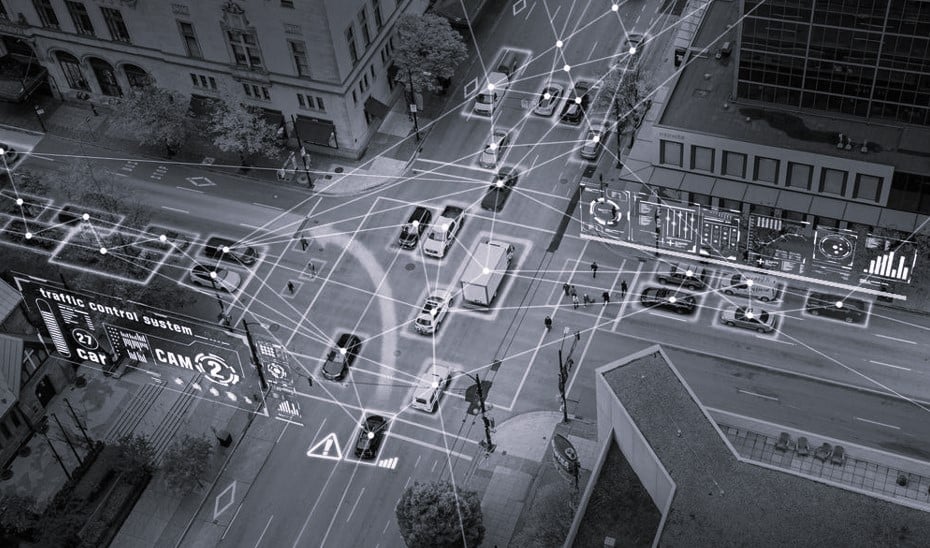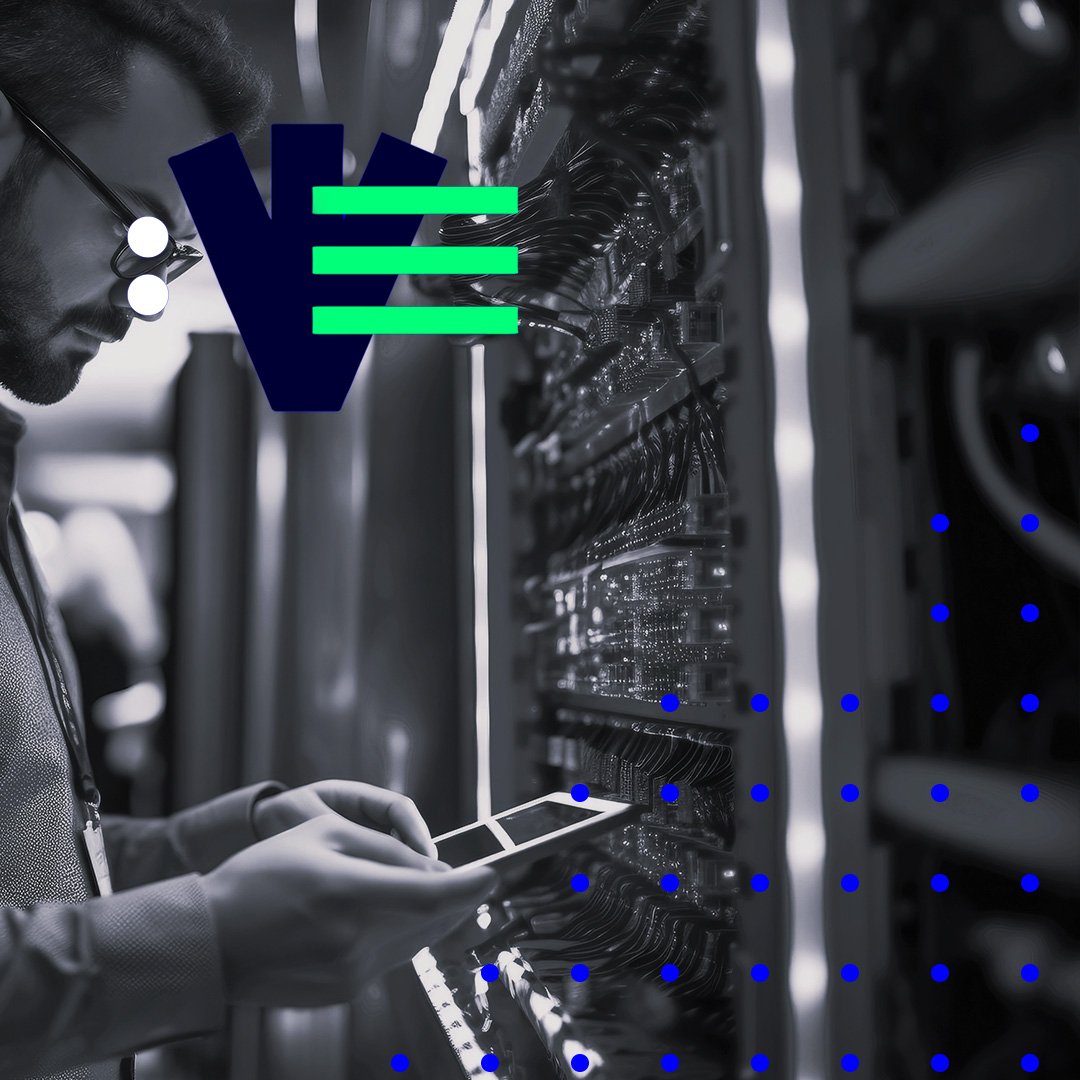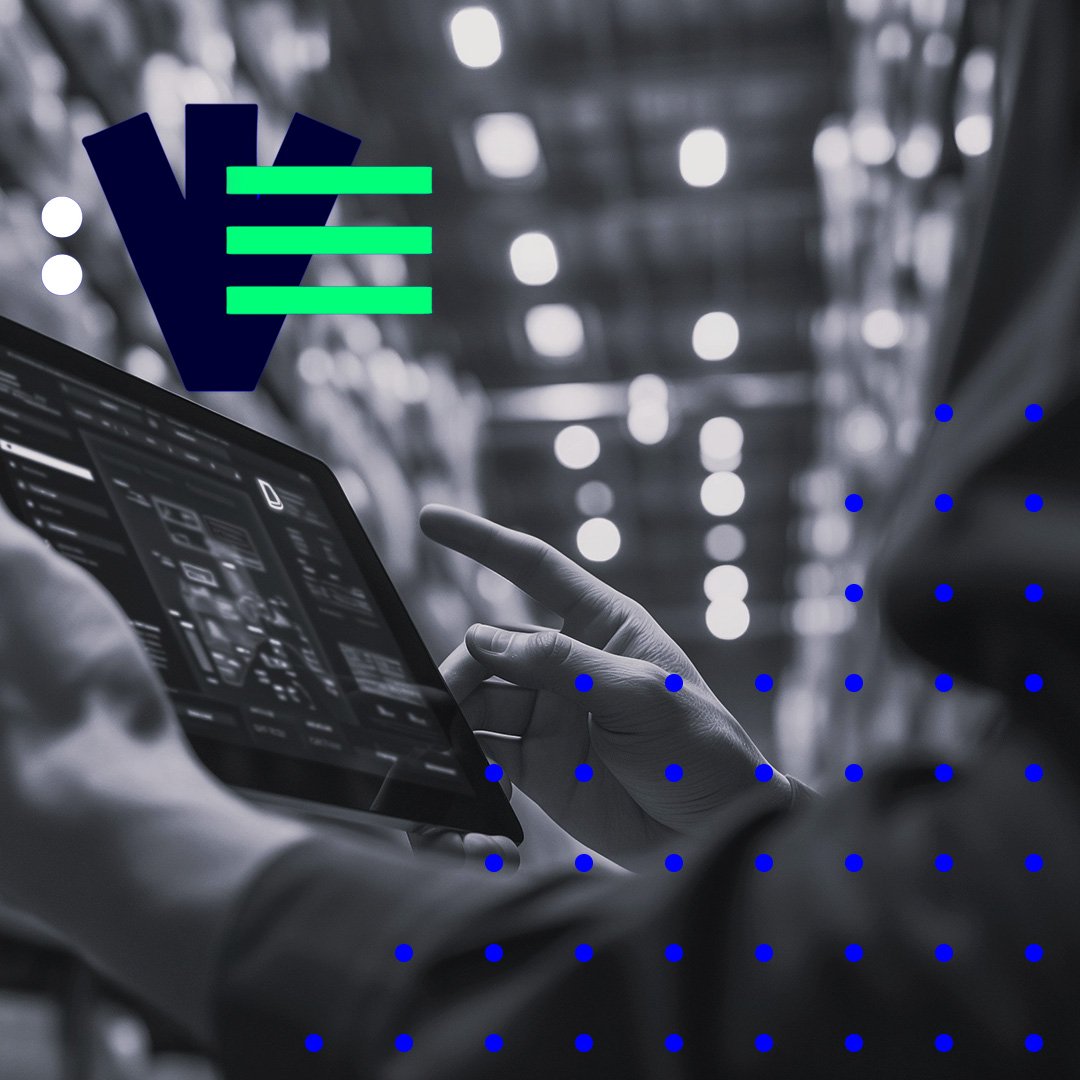How IT service providers optimally leverage current wireless trends
The future of connectivity An analysis of the significance of 5G, Wi-Fi 6E, Wi-Fi 7, IoT, and AI for IT service providers in Switzerland
11 min read
 Géraldine Wymann
:
Jun 7, 2024 1:02:38 PM
Géraldine Wymann
:
Jun 7, 2024 1:02:38 PM

Discover how public administrations and educational institutions can leverage the latest trends in the Internet of Things (IoT), Artificial Intelligence (AI), and Big Data analytics. Explore how these cutting-edge technologies enable efficiency enhancements, personalized learning experiences, and optimized resource utilization. Lead the way in shaping smart cities and campus environments!

The integration of Internet of Things (IoT) technology is transforming management practices within public institutions and educational establishments. By harnessing wireless technology, IoT facilitates seamless communication between various devices, leading to improved resource allocation and streamlined workflows. Real-time data transmission from sensors and intelligent devices allows for process optimization and automation. This interconnectedness presents significant opportunities for monitoring infrastructure, traffic, building management, and enhancing security within schools and government agencies. Leveraging IoT in public administration and education promises enhanced productivity, cost-effectiveness, and more efficient resource utilization.
Envision a scenario where traffic lights dynamically adjust based on real-time traffic flow, air quality sensors trigger targeted interventions to address pollution, and energy grids optimize consumption in response to instantaneous demand. The implementation of smart traffic lights in Rotterdam, Netherlands, has resulted in a 15% reduction in congestion, while Dubai, United Arab Emirates, has established a city-wide IoT network to monitor air quality, traffic, and energy consumption for enhanced resource management.
As part of the "Safe Kerala" project, 700 AI cameras have been installed to detect traffic violations such as speeding, running red lights, and other infractions. The cameras utilize artificial intelligence to identify and document offenses, aiming to make traffic surveillance more effective. In addition to the AI cameras, the project includes awareness campaigns, the enforcement of traffic laws, and measures to improve road infrastructure. "Safe Kerala" aims to reduce traffic accidents and enhance overall traffic safety.
This exemplifies the transformative potential of IoT, where countless interconnected devices continually generate data to facilitate monitoring, analysis, and enhancement of critical aspects of everyday life.
Smart schools leverage RFID chips and IoT technologies to enhance safety, efficiency, and environmental sustainability. Centralized systems enable automation of processes such as attendance tracking, enabling schools to optimize resource utilization effectively.
Connected utility systems empower schools to manage heating, cooling, and lighting through IoT solutions, thereby reducing energy consumption and costs. Precise budget planning based on smart energy reporting, as demonstrated by New Richmond Schools, can lead to significant savings.
The integration of IoT in educational institutions extends students' connectivity with digital learning methods and platforms. Through remote learning, online assessments, and digital assignments, students are more actively engaged within the network, facilitating more efficient learning experiences. The prevailing trend is towards a comprehensive digital learning environment, prioritizing smart schools, efficient resource management, and connected students.
"Higher education institutions are experiencing tectonic shifts in a new generation of students that are always connected. Smart devices and video streaming have replaced paper, pencil, and chalkboards. Classrooms are hybrid with local and remote attendance. Labs are leveraging on-line resources including research and lab equipment. All administrative activities are e-enabled including registration, course selection, grading, attendance, professor communication, and school news.
New applications including wayfinding, security checkpoints, crowdsourcing, artificial intelligence monitoring, and asset tracking are addressing security challenges. Conventional classrooms are being re-designed with video streaming, large screen monitors, flexible furniture, and collaborative workspaces. Universities are in this transition with unknown end states; they must continue to re-invent themselves to stay relevant with this in-line world.
Higher education institutions must modernize their network infrastructures to meet these demands. This modernization involves an ecosystem of network technologies, both wired and wireless, where bandwidth, mobility, location intelligence, endpoint authorization, security mitigation, data privacy, and operation efficiencies are integrated. When considering any type of replacements, upgrades, or new campuses, integration is the key to success as the combination of Wi-Fi, switching, zero trust security, cloud control, localized dataplanes, and operation automation lead to better long term innovative outcomes."
Detlev Knierim, Head of CEE and Emerging EMEA bei Arista Networks
"In implementing smart infrastructure and utilizing IoT in public facilities and educational institutions, a reliable Wi-Fi infrastructure is crucial. It forms the foundation for seamless wireless connectivity between networked devices, enabling efficient communication and data exchange.
However, along with a reliable Wi-Fi infrastructure, other factors are important to ensure successful implementation. These include a robust IT infrastructure ensuring data security, as well as interoperability among different devices and systems. Scalability to handle growing demands and user numbers, along with staff training to ensure effective utilization of the technology, also play vital roles.
Ultimately, the success of Wi-Fi implementation in public facilities and educational institutions depends on considering all these factors and comprehensively incorporating them into planning and implementation. Only then can a reliable, secure, and efficient wireless network be ensured, forming the foundation for successful smart infrastructure", suggests Christoph Eggler, Solutions Architect at BNC.
In recent years, Artificial Intelligence (AI) has emerged as a crucial tool in public administrations and educational institutions. Through the utilization of advanced technologies like chatbots and data analytics, AI has the capability to enhance efficiency, improve access to information, and elevate service quality across these sectors. Governments worldwide are embracing AI to streamline citizen interactions, optimize administrative processes, and deliver tailored educational experiences. This trend heralds a paradigm shift in the delivery of public services and educational content.
Singapore and India serve as prime examples of AI implementation. AI-driven chatbots such as Ask Jamie and MyInfo Bot have significantly streamlined citizen interactions in Singapore, reducing call center burdens by 30%. Meanwhile, in India, the Umang platform, powered by AI, has simplified access to over 200 government services. Collaborations between government entities and technology firms, like the partnership between Indian Railways and Haloocom, illustrate the transformative potential of AI. Through intelligent support solutions, such collaborations have modernized communication infrastructure, resulting in enhanced efficiency, data integrity, and customer satisfaction.
Educational institutions are leveraging AI to enrich student interactions and improve learning outcomes. AI-powered chatbots and virtual assistants are aiding tasks such as library research and academic advisories. Furthermore, AI facilitates data analysis for predicting student needs and offering personalized career guidance. It is imperative for AI implementations to adhere to ethical standards and data privacy regulations.
The future of AI in education promises enhanced efficiency and personalized learning experiences, marking a convergence of human expertise with AI capabilities.
"The AI era promises to profoundly transform how we connect and exchange information, with AI applications poised to revolutionise our digital landscape. As these applications evolve, they place increasingly rigorous demands on computational infrastructure. Research institutions, educational establishments and government organisations require robust networking infrastructure to harness the power of AI technology to perform crucial processes.
It’s imperative to work closely with this sector’s organisations to understand their specific requirements and compliance obligations, tailoring solutions to meet these needs and priorities to build smarter, faster networks while championing security, reliability, and performance."
Detlev Knierim, Head of CEE and Emerging EMEA bei Arista Networks
The analysis of large datasets presents significant opportunities for deriving valuable insights to make informed decisions and implement effective measures.
Educational institutions can leverage Big Data and Analytics to create personalized learning experiences for their students. By analyzing learning behaviors, interests, and preferences, educational institutions can develop tailored educational programs and provide more effective support to learners.
Additionally, Big Data and Analytics can be used to identify potential risk factors early on and implement early warning systems to identify students who may require additional support. Analyzing data such as grades, attendance, and socio-demographic characteristics enables educational institutions to forecast academic success and devise appropriate interventions.
Public administrations can harness Big Data and Analytics to optimize resource allocation. Analyzing data such as population statistics, traffic flow, and energy consumption allows authorities to better predict resource needs and take measures to optimize supply and demand.
Furthermore, Big Data and Analytics empower public administrations to make data-driven decisions and support policy measures. Analyzing complex data enables authorities to identify trends, predict risks, and make evidence-based decisions to enhance citizens' quality of life.
It is crucial for educational institutions and public administrations to invest in the necessary infrastructure and expertise to fully exploit the potential of Big Data and Analytics. Continuous development of data analysis capabilities, data privacy policies, and partnerships with relevant stakeholders will advance the use of Big Data and Analytics for educational institutions and public administrations in Switzerland.
"From my perspective, investing in a scalable and secure IT infrastructure that seamlessly integrates with cloud services and real-time analytics tools to meet the demands of big data is essential. Prioritize data privacy and cybersecurity to comply with privacy regulations and expand analytics capabilities so that employees can make data-driven decisions. Integrate systems that seamlessly bring together different data sources and ensure that your solution can adapt to future requirements. It's not just about leveraging modern technologies but also fostering a culture of data-driven decision-making within your organization."
Patrik Schilt, Co-CEO & Chief Sales Officer bei BNC

The combination of IoT, AI, and Big Data trends lays the foundation for the implementation of Smart Cities and Smart Campuses. By leveraging these technologies, cities and educational institutions can develop innovative solutions to enhance the lives of residents and students. Learn more about the exciting developments in the fields of Smart Cities and Smart Campuses!
Switzerland has established itself as a leader in Smart Cities, focusing on efficiency, sustainability, and innovation to further develop its urban areas. A variety of Swiss cities have already implemented smart solutions that enhance residents' daily lives and optimize resource utilization. According to a study by the Smart City Index 2020, Zurich ranks first among the 109 cities worldwide.
Efficient transportation is a crucial component of smart transformation. For example, the city of Geneva has implemented an intelligent traffic management system that uses real-time data to improve traffic flow and reduce congestion. According to a study by the Association of Public Transport (VöV), these measures have led to a 6% reduction in average travel time.
Another example is the city of Basel, which is advancing the use of intelligent streetlights. These lights use sensors to adjust illumination based on lighting conditions and pedestrian presence. This not only results in significant energy savings but also enhances safety for citizens.
Switzerland has also made significant strides in sustainable energy. For instance, in the city of Winterthur, an intelligent energy grid has been implemented, efficiently integrating renewable energy, energy generation, and consumption. A study by the Zurich University of Applied Sciences (ZHAW) demonstrated that this network can reduce energy consumption by up to 17% and increase the share of renewable energy.
Educational institutions in Switzerland have recognized that a Smart Campus can offer students innovative learning opportunities, improved communication, and more efficient administration. By integrating smart technologies, Swiss colleges and universities are developing intelligent campus environments to optimize students' learning experiences.
An example is the University of Lausanne, which has introduced a Smart Classroom concept. These classrooms are equipped with interactive displays, wireless technology, and intelligent room controls to promote collaboration and information exchange between teachers and students. According to a survey conducted by the university, students using these Smart Classrooms reported higher satisfaction and better learning experiences.
The EPFL (École Polytechnique Fédérale de Lausanne) has also pursued innovative approaches to create a Smart Campus. For instance, they have implemented digital assistance systems that facilitate students' access to information and resources, whether related to course schedules, library resources, or event notifications. These systems have improved information flow and enhanced students' efficiency in organizing their studies.
Another initiative comes from the University of Basel, which has implemented smart energy management on its campus. By monitoring and controlling energy consumption, the university has reduced energy consumption by 15% while simultaneously decreasing its CO2 emissions. This demonstrates how a Smart Campus can positively impact not only learning but also the ecological footprint.
According to data from the Federal Statistical Office (BFS), the adoption of smart technologies in educational institutions has continuously evolved in recent years. Over 70% of colleges and universities in Switzerland have indicated that they are pursuing Smart Campus initiatives in their strategic plans.
The convergence of IoT, AI, and Big Data trends presents numerous opportunities for public administrations and educational institutions. However, it also introduces new challenges for IT leaders in planning and implementing IT infrastructure.
To fully exploit the benefits of these technologies, IT leaders must make strategic decisions to ensure the development of a reliable and scalable IT infrastructure. This includes establishing a robust and secure network capable of meeting the demands of IoT, AI, and Big Data applications. Additionally, comprehensive considerations for data security and privacy policies are essential to ensure the secure handling of sensitive information.
Moreover, the interoperability of different systems and devices is paramount to facilitate seamless communication and integration. Planning IT infrastructure should also account for future growth and scalability to accommodate evolving demands.
IT leaders must prioritize the training and education of their staff to effectively utilize these technologies. This may involve implementing new training programs and collaborating with educational partners to enhance the team's proficiency in IoT, AI, and Big Data.
In summary, the integration of IoT, AI, and Big Data in public administrations and educational institutions necessitates strategic decision-making by IT leaders to establish a resilient and future-ready IT infrastructure. This requires meticulous planning and collaboration with diverse stakeholders to maximize the potential benefits of these technologies.
The adoption of Wi-Fi 6E and, eventually, Wi-Fi 7 signifies a substantial leap forward in wireless technology, offering notable advantages for both public institutions and educational establishments. Here's a closer look at the potential implications for the trends mentioned above:
Wi-Fi 6E and Wi-Fi 7 promise significantly expanded bandwidth, resulting in faster and more dependable internet connections. This facilitates the efficient utilization of cloud services, the deployment of sophisticated applications, and the seamless transmission of data in smart building management systems.
By harnessing additional frequency bands, Wi-Fi 6E and Wi-Fi 7 enable higher performance density, accommodating a larger number of connected devices simultaneously without sacrificing performance. This proves beneficial for wireless connectivity in bustling environments like schools and public institutions.
Wi-Fi 6E and Wi-Fi 7 deliver improved latency, leading to quicker response times for applications and the execution of real-time operations. This is particularly advantageous for educational applications requiring immediate interaction, such as virtual learning platforms and video streaming services.
With the implementation of new security standards like WPA3 (Wi-Fi Protected Access 3), Wi-Fi 6E and Wi-Fi 7 bolster the security of wireless networks. This holds critical importance for public institutions and educational facilities tasked with safeguarding sensitive data and personal information.
The introduction of Wi-Fi 6E and, subsequently, Wi-Fi 7 offers public institutions and educational facilities the opportunity to leverage technological advancements, thereby better aligning with existing trends in wireless technology. Increased bandwidth, improved performance density, reduced latency, and enhanced security contribute to further optimizing efficiency, connectivity, and safety within these environments. It is imperative for decision-makers to grasp the benefits and implications of these advanced Wi-Fi technologies and strategically deploy them to maximize qualitative enhancements.
The selection between WiFi and 5G for public administrations and educational institutions hinges on various factors, encompassing the unique requirements and circumstances within each entity. Here are some nuanced considerations aiding in the decision-making process:
WiFi predominantly offers extensive coverage and range indoors, notably with strategically placed access points. Conversely, 5G boasts broader coverage outdoors, facilitating seamless connectivity across expansive areas.
WiFi typically delivers superior bandwidth speeds, especially with the implementation of advanced standards like WiFi 6 or forthcoming iterations. However, 5G can still offer commendable speeds meeting the demands of public administrations and educational institutions.
WiFi has the capability to accommodate a larger number of simultaneously connected devices, advantageous in settings such as schools with numerous users. Nevertheless, 5G exhibits impressive capacity to cater to high volumes of devices concurrently.
Both WiFi and 5G uphold critical security mechanisms essential for safeguarding data and user information. WiFi leverages security protocols such as WPA3, while 5G incorporates robust security measures. It's pivotal to consider the security standards and policies of both technologies and implement suitable security measures within the infrastructure.
The costs associated with deploying and maintaining WiFi or 5G solutions may fluctuate. A comprehensive cost-benefit analysis, encompassing factors like hardware, maintenance, and potential licensing fees, is imperative to gauge the financial implications of each technology.
It's noteworthy that WiFi and 5G can be synergistically utilized to leverage the strengths of both technologies. For instance, WiFi may be employed indoors, such as in classrooms and offices, while 5G can be leveraged outdoors and for mobile applications. Ultimately, the decision should be tailored to the specific requirements, budgetary constraints, and objectives of the organization. Thorough analysis and consultation with experts can aid in selecting the most apt wireless technology.
https://elearningindustry.com/wireless-technology-in-education-trends-applications-benefits
https://www.cio.com/article/3518822/5-wireless-technology-trends-transforming-education.html
https://www.govloop.com/community/blog/wireless-technology-trends-public-sector-organizations/
https://www.intel.com/content/www/us/en/home-networks/wifi-technology/wifi-technology-explained.html
https://www.arubanetworks.com/solutions/wi-fi/wi-fi-in-education/
https://www.juniper.net/us/en/solutions/verticals/education/5g-in-education/
https://www2.deloitte.com/us/en/pages/public-sector/articles/5g-technology-in-the-public-sector.html

The future of connectivity An analysis of the significance of 5G, Wi-Fi 6E, Wi-Fi 7, IoT, and AI for IT service providers in Switzerland

What awaits the Head of IT in Banks and Insurance Companies in the year 2024? IoT, Telematics, Usage-Based Insurance, Open Banking, and Big Data...

The Impact of Wireless Technologies on the Transportation and Logistics Industry Optimizing Efficiency, Cost, and Communication through IoT, AI,...